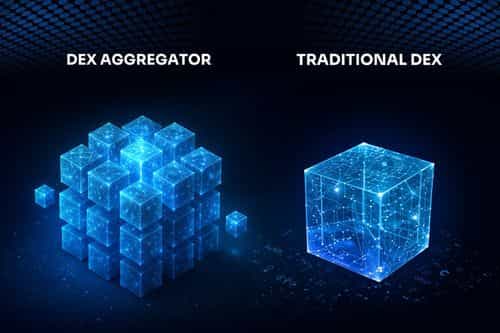Why Automated Market Makers Are Essential for DeFi Ecosystems


In the rapidly evolving world of decentralized finance, Automated Market Makers (AMMs) play a pivotal role in enabling seamless, trustless trading without traditional order books. They underpin decentralized exchanges by allowing anyone to become a liquidity provider, while facilitating 24/7 trading across tokens. This article dives into how AMMs power DeFi, exploring liquidity pools, trading efficiency, models and risks, to explain why they’re essential for DeFi ecosystems.
Role of liquidity pools in decentralized finance
Automated Market Makers rely on liquidity pools, which are smart contracts holding paired tokens contributed by liquidity providers (LPs). These pools enable swapping directly against the contract, rather than matching with other users. Liquidity pools ensure constant market access, fee rewards for LPs, and decentralized, permissionless trading.

Liquidity pools intro
Liquidity pools are smart contracts that hold two (or more) tokens and quote swap prices directly from their reserves using a pricing curve (an invariant) instead of an order book. Traders swap against the pool; liquidity providers (LPs) deposit assets and earn fees automatically.
In short: pools automate market making, pricing, settlement, and fee distribution, while aligning better depth with smoother trading.
Impact of AMMs on trading efficiency and slippage reduction
AMMs significantly enhance trading efficiency by eliminating the need for intermediaries and enabling near-instant swaps. However, large trades may cause slippage as prices adjust based on pool reserves. Higher liquidity reduces slippage, making trades more predictable and efficient.

Slippage reduction intro
Slippage is the gap between a trade’s expected price and its execution price, driven by how far a swap has to “push” the pool along its pricing curve and by fees/MEV. In invariant-based AMMs (e.g., constant-product (x⋅y=k)), deeper reserves flatten the local curve around the current price, so a given order consumes a smaller fraction of the pool and the average execution price stays closer to the pre-trade quote. Designs that concentrate liquidity near the active price (CLAMMs) or use high-amplification stable curves for correlated assets further reduce curvature, lowering price impact for the same notional. Effective slippage is the combination of curve impact, fees, and routing efficiency; arbitrage later recenters the pool, but that doesn’t retroactively improve the trader’s fill, so depth at the moment of execution is what matters.
What tightens execution in practice
Takeaway: Strong, well-positioned liquidity (depth + curve design + smart routing) is the primary lever for keeping AMM slippage low and pricing reliable, while still paying LPs via swap fees.
Major automated market maker models and their innovations
“Automated market makers are one of the most prominent decentralized finance applications… allowing users to exchange different types of crypto‑assets without the need to find a counterparty.”
— Bartoletti et al.

Constant product, constant sum, and hybrid AMM models explained
Most early AMMs (e.g., Uniswap) utilise a constant-product formula (x·y = k), which automatically adjusts prices as asset ratios shift.
Latest advancements in AMM protocols for better efficiency
AMM research is shifting from “one-pool, one-curve” to designs that share liquidity, adapt to depth, and waste less value to arbitrage.
Bottom line: Tighter prices, lower slippage, and better fee capture for LPs, without giving up permissionless access.
Challenges and risks associated with automated market makers
Impermanent loss and how it affects liquidity providers
Impermanent loss occurs when token prices diverge from initial deposit ratios: LPs may fare worse than simply holding tokens. Loss is “impermanent” because if prices revert, it diminishes, but if withdrawn early, it becomes real. High‑volatility pairs increase this risk; models such as Uniswap v3 let LPs adjust position ranges to optimize returns versus loss.
Security concerns and smart contract vulnerabilities in AMM platforms
Smart-contract code underpins AMM logic. Vulnerabilities or bugs can expose users to hacks, liquidity exploits, or MEV attacks (miner‑extracted value), where adversaries reorder or front‑run transactions for profit. Rigorous audits and formal models help mitigate risk, but security remains a key challenge.
Summary
Automated Market Makers are foundational to DeFi: they democratize liquidity, reduce friction via algorithmic pricing, and empower decentralized, permissionless trading. Constant‑product, constant‑sum and hybrid models each serve different use‑cases. Innovations like global aggregated AMMs and smart cost‑function design aim to reduce impermanent loss and improve efficiency. Still, risks like impermanent loss and contract vulnerabilities must be addressed through careful design and monitoring.
Resources
Frequently asked questions
Check out most commonly asked questions, addressed based on community needs. Can't find what you are looking for?
Contact us, our friendly support helps!
What makes an AMM different from a centralized order‑book exchange?
AMMs operate via liquidity pools and automated pricing rules; no order matching is needed, enabling non‑custodial, permissionless trading.
Can liquidity providers avoid impermanent loss?
Not fully. Using stablecoin pairs, narrow range provision, or layered fee strategies can reduce, but not eliminate, impermanent loss risk.
How do AMMs handle price manipulation or front‑running?
Advanced protocols use constant‑circle or hybrid pricing, MEV‑resistant designs, and aggregated liquidity models to minimize arbitrage opportunities and vulnerabilities.




